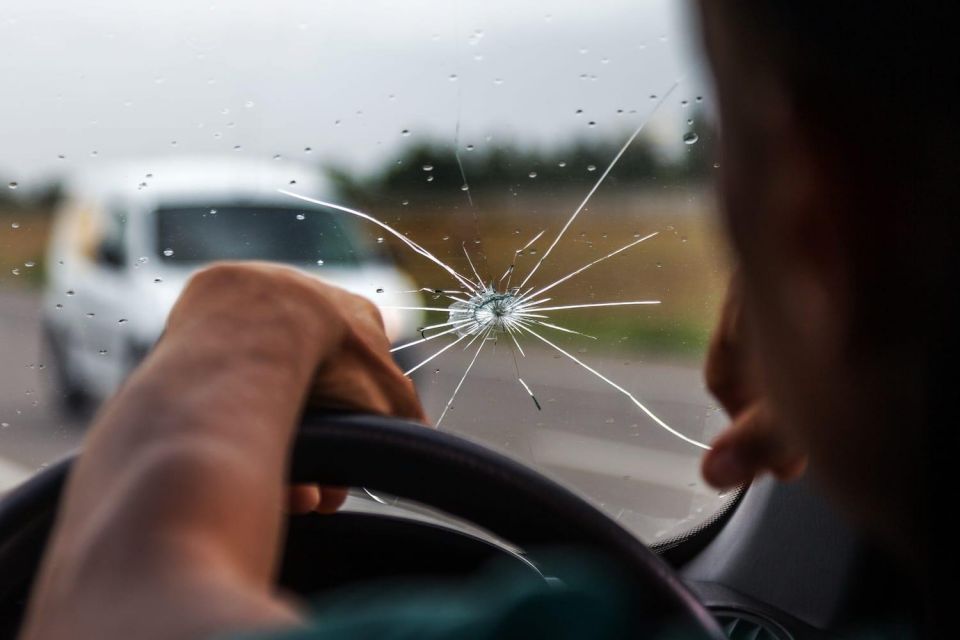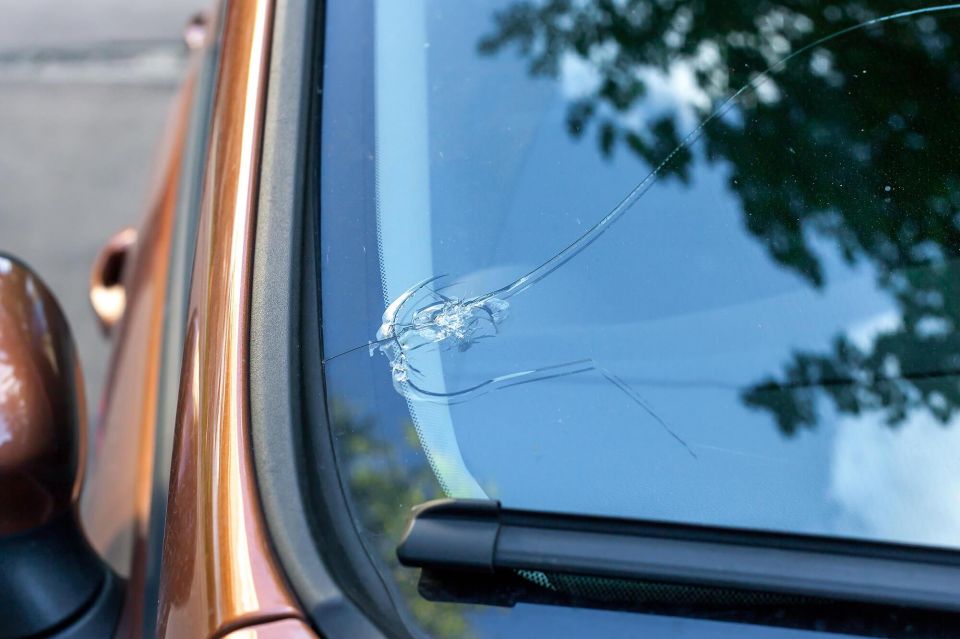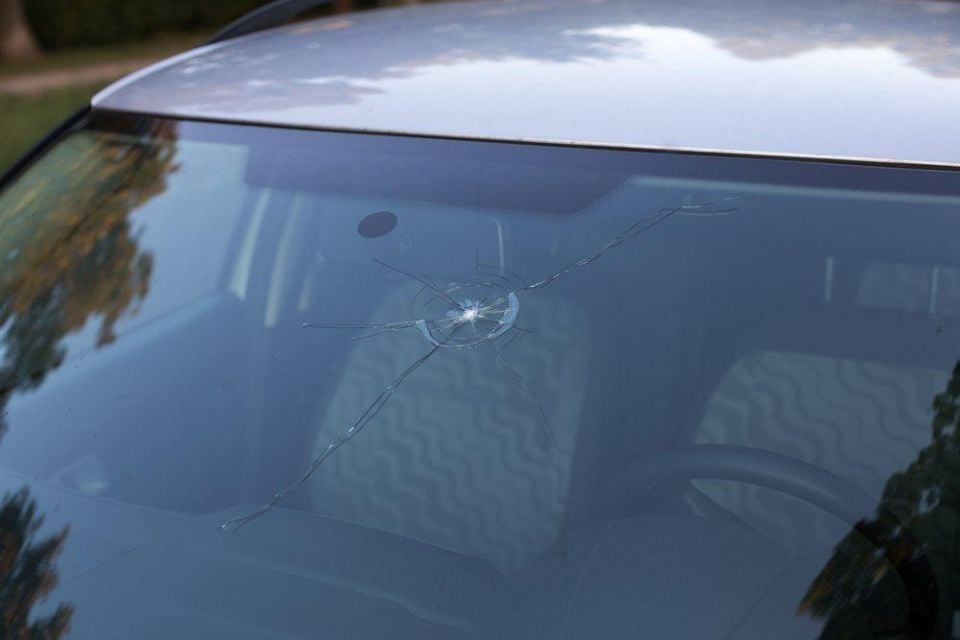

Ben Zachariah
Video: Off-road battle for Beer O’Clock Hill has automakers scrambling
7 Hours Ago
If you’re pulled over with a crack or chip you might be slapped with a defect sticker and you’ll need to get the problem in a set time.

Senior Contributor


Senior Contributor
Driving with a cracked, broken, chipped or shattered windscreen can be dangerous for yourself, and other road users.
Of course, this is open to debate. If there’s a chip or crack in the glass that’s well out of the line-of-sight for the driver – say, in the top corner on the passenger’s side – then it’s hardly going to be as risky as if there’s a big bullseye crack right where you’re supposed to be looking when you’re driving.

And the laws across Australia generally reflect that mindset – if it’s hard to see what you need to see, it’s a problem. If you’re pulled over with a crack or chip like this, then you might be slapped with a defect sticker – meaning your car isn’t roadworthy, and you’ll need to get the problem fixed within a certain period of time.
Windscreens can be expensive, too. Modern cars have a lot of technology built into their windshields – up around the rearview mirror there are often sensors and cameras that require specific glass designs to be effective, and likewise there are (mainly European) cars with heated glass windscreens that can be costly to replace.
So, how do you know if your damaged windshield is going to get you in trouble with the law? Here’s a rundown of the rules across Australia:
These three jurisdictions all follow the National Road Transport Commission’s Roadworthiness Guidelines, and as such, have similar rules around what is or isn’t okay in terms of windshield cracks and chips.
The Vehicle Standards Information documentation in NSW states that “a windscreen should be replaced if it is severely chipped, cracked, abraded, badly scratched, discoloured or cannot be repaired to remove the fault.”

Don’t go thinking that if you get one little chip you’ll need to fork out hundreds for a new front glass panel, though. You’re allowed to have any two of the following, on the driver’s-side half of the windscreen (from the centreline to the right-side A-pillar, as you look out the windscreen): hairline crack up to 30mm long; crack from the windscreen’s edge up to 75mm long; bullseye crack up to 16mm diameter.
When it comes to roadworthy checks in Vic, windscreens will fail if they are “discoloured, badly scratched, fractured or chipped within the area wiped by the windscreen wiper(s) to the extent that the driver’s vision is so impaired that the vehicle cannot be driven safely”.
It would also be illegal to drive your car in Victoria if the windscreen is a laminated one with a crack that penetrates more than a single layer of glass, or if your windscreen has one or more bullseye cracks greater than 16mm diameter in the area of the glass where the wipers operate. Also, if you have one or more hairline cracks greater than 150mm long in the wiped zone.
We know that police are a bit strict in Vic, so you should also note that even if your windscreen has a smaller bullseye or line cracking, it could still be illegal to drive “if it

Note that a bullseye crack or hairline crack under the sizes above could still be illegal to drive with if “the vehicle cannot be driven safely”.
Queesland has very similar rules to Victoria, in that any damage in the area of the windscreen where the wipers operate (in the driver’s half of the windscreen) will dictate the roadworthiness of the vehicle.
In that area, a windshield “may have bull’s-eyes and star fractures up to 16 mm in diameter and cracks up to 150 mm long which do not penetrate more than one (1) layer of the glass in a laminated windscreen, provided they do not interfere with the driver’s vision.”
Further, any damage to the area of the ‘screen where the wipers operate mustn’t impede the driver’s vision.
The rules for SA are seemingly a bit more open to interpretation, in that the guidelines in the Light Vehicle Fact Sheet for Vehicle Standards in that state suggest it is expected that your car windscreen is “not to be excessively cracked, chipped or scratched”.
How much is excessive? Could be grounds for an argument with a police officer, or in court. Probably best to get any big cracks or chips fixed, then (or just use the other state guidelines as a runsheet).
The two smallest jurisdictions in Australia have identical rules around windscreen safety.
The laws state that it isn’t legal to drive with a cracked windscreen if it impedes your vision while driving.
Any two of the following three types of damage are acceptable: one or more bullseye cracks – up to 16mm in diameter; a hairline crack up to 30mm in length; a crack from the edge of the windscreen, up to a length of 75mm.
Any damage greater than this on the driver’s side of the windscreen will be illegal to drive with. This level of damage on the rest of the windscreen may also cause the vehicle to be deemed illegal to drive.
In Tasmania, the recommendation is that “all defects be repaired as soon as possible”. Further, there are guidelines about what is a proper repair. It must not “exhibit any significant
optical defects which would distort or distract the vision of the driver and should restore
clarity to the damaged area”, and nor should it reduce the effectiveness of the wipers. Plus it should be in line with the manufacturer’s instructions, in terms of the materials used.
Not intended as legal advice. Check with the relevant roads authority in your state or territory.
Matt has more than a decade of experience in automotive journalism, and loves exploring the pros and cons of new cars, delving into deep-dive industry stories, and going for a drive just for the fun of it.


Ben Zachariah
7 Hours Ago


CarExpert.com.au
15 Hours Ago


Damion Smy
1 Day Ago


Damion Smy
1 Day Ago


Damion Smy
1 Day Ago


Damion Smy
2 Days Ago